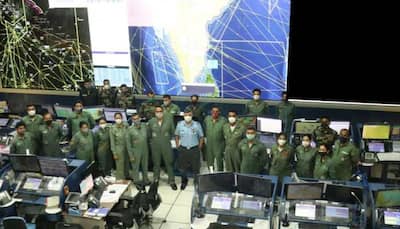India’s Operation SINDOOR, initiated on May 7, 2025, in the aftermath of the Pahalgam terror attack, which claimed the lives of 26 innocent civilians, has showcased exemplary coordination between the tri-services – Indian Navy, Army and Air Force. ‘Operation Sindoor’ was extended beyond its primary objective in response to a Pakistani misadventure. While Operation SINDOOR was conceived as a punitive and targeted campaign to dismantle the terror infrastructure across the Line of Control and deeper inside Pakistan, it also resulted in a reality check for the Pakistani Army and called out their nuclear bluff.
The four-day-long ‘Operation Sindoor’ became highly successful, and the Integrated Theatre Commands (ITC) played a crucial role in it.
An ITC is a unified command structure that integrates the assets and personnel of the Army, Navy, and Air Force under a single commander.
This unified approach is designed for specific geographical areas (theatres) or functional domains. It is aimed at achieving better coordination, faster decision-making, and enhanced combat effectiveness by breaking down the traditional service-specific silos.
“To modernise the Armed Forces, efforts are underway to restructure forces through the establishment of Integrated Theatre Commands (ITCs) and Integrated Battle Groups (IBGs). These reforms aim to optimize operational preparedness by unifying the Army, Navy, and Air Force capabilities based on geography and function,” said the government.
It also said that studies at the Service Headquarters level are actively exploring Theatre Commands for Land Borders, Maritime, and Joint/Integrated Air Defence to enhance synergy and combat effectiveness. The Chief of Defence Staff (CDS) Gen Anil Chauhan has emphasized that jointness and integration are essential prerequisites for ITCs, which will clearly separate operational roles from administrative Raise-Train-Sustain (RTS) functions, allowing commanders to focus on security and operations.
“ITCs represent the start of wider reforms toward multi-domain operations, integrating space and cyberspace with traditional domains, and advancing digitization and data-centric warfare,” said the government.
The creation of the post of Chief of Defence Staff (CDS) in 2020 was a major step towards facilitating the implementation of theatre commands, with the CDS tasked with restructuring military commands to bring about jointness.
On 24 December 2019, the Union Cabinet approved the creation of the Chief of Defence Staff (CDS), a four-star General who heads the Department of Military Affairs (DMA) and acts as the principal military adviser to the Defence Minister on tri-Service matters.
* Overseeing the Army, Navy, Air Force, and Territorial Army.
* Promoting jointness in procurement, training, staffing, and command restructuring.
* Leading tri-service organizations, including cyber and space commands.
* Advising the Nuclear Command Authority and participating in defence planning bodies.
* Driving reforms to optimize resources, enhance combat capabilities, and reduce waste.
* Implementing multi-year defence acquisition plans and prioritizing inter-Service needs.
* The CDS strengthens unified leadership and fosters integration for a more coordinated and modern Indian military.
Stay informed on all the , real-time updates, and follow all the important headlines in and on Zee News.








